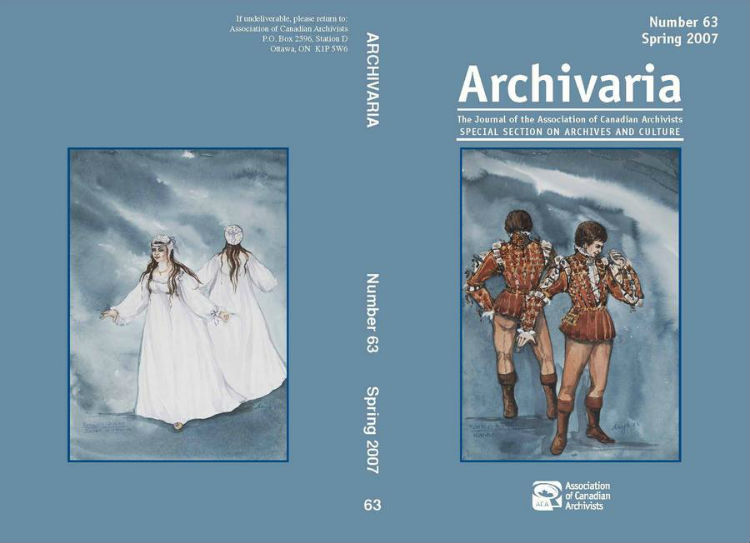Archiving Moving Image and Audio Cultural Works in Canada
Abstract
This article explores developments in the archiving of Canadian films, videos, and sound recordings in the several decades since Archivaria first published major articles on film and broadcasting. Some aspects of audiovisual archiving practices and procedures have not changed drastically, such as the challenge of how to make archival selections from the masses of recordings being produced in Canada. However, technology and its impact on preservation is constantly evolving. The article looks at how changes in broadcasting have altered programming, notably broadcasts of and about the performing arts and other cultural programs, and how some broadcasters have become very active in archiving their own creations. Vital to selection criteria is a good understanding of the long-term survival prospects of the media on which films, videos, and sound recordings are created and stored. At this point in our history, digital technology is a double-edged sword, promising benefits such as cheaper storage media and improved access, but posing threats to older film, videos, and sound recordings as services such as film processing laboratories and supplies such as audio reel splicing tape become more difficult to find.
RÉSUMÉ
Cet article décrit les développements dans l’archivage des films, des vidéos et des bandes sonores qui sont survenus durant les nombreuses décennies qui ont suivi la parution des premiers articles sur les films et la radio et télédiffusion dans la revue Archivaria. Certains aspects des pratiques et des procédures dans le domaine, tels que ceux liés au défi de la sélection des documents d’archives parmi la masse d’enregistrements produits au Canada, n’ont pas changé dramatiquement. Toutefois, la technologie et son impact sur la préservation est en constante évolution. Cet article examine comment les changements en radio et télédiffusion ont altéré la programmation, notamment au niveau de la diffusion d’émissions portant sur les arts de la scène et d’autres programmes culturels, et comment certains diffuseurs se sont engagés très activement dans l’archivage de leurs propres créations. Une connaissance solide de la probabilité de survie à long terme des médias sur lesquels les films, les vidéos et les bandes sonores ont été créés ou sauvegardés est primordiale pour l’élaboration des critères de sélection. Actuellement, la technologie numérique est une épée à deux tranchants: elle promet des avantages comme un support de données moins dispendieux et un meilleur accès, mais elle constitue une menace pour les films, les vidéos et les bandes sonores plus anciens, puisque les services comme les laboratoires de traitement de film et les matériaux comme le ruban à collage des bobines de bande deviennent plus difficiles à trouver.
Authors of manuscripts accepted for publication retain copyright in their work. They are required to sign the Agreement on Authors' Rights and Responsibilities that permits Archivaria to publish and disseminate the work in print and electronically. In the same agreement, authors are required to confirm that "the material submitted for publication in Archivaria, both in its paper and electronic versions, including reproductions of other works (e.g. photographs, maps, etc.) does not infringe upon any existing copyright." Authors of manuscripts accepted for publication retain copyright in their work and are able to publish their articles in institutional repositories or elsewhere as long as the piece is posted after its original appearance on archivaria.ca. Any reproduction within one year following the date of this agreement requires the permission of the General Editor.





